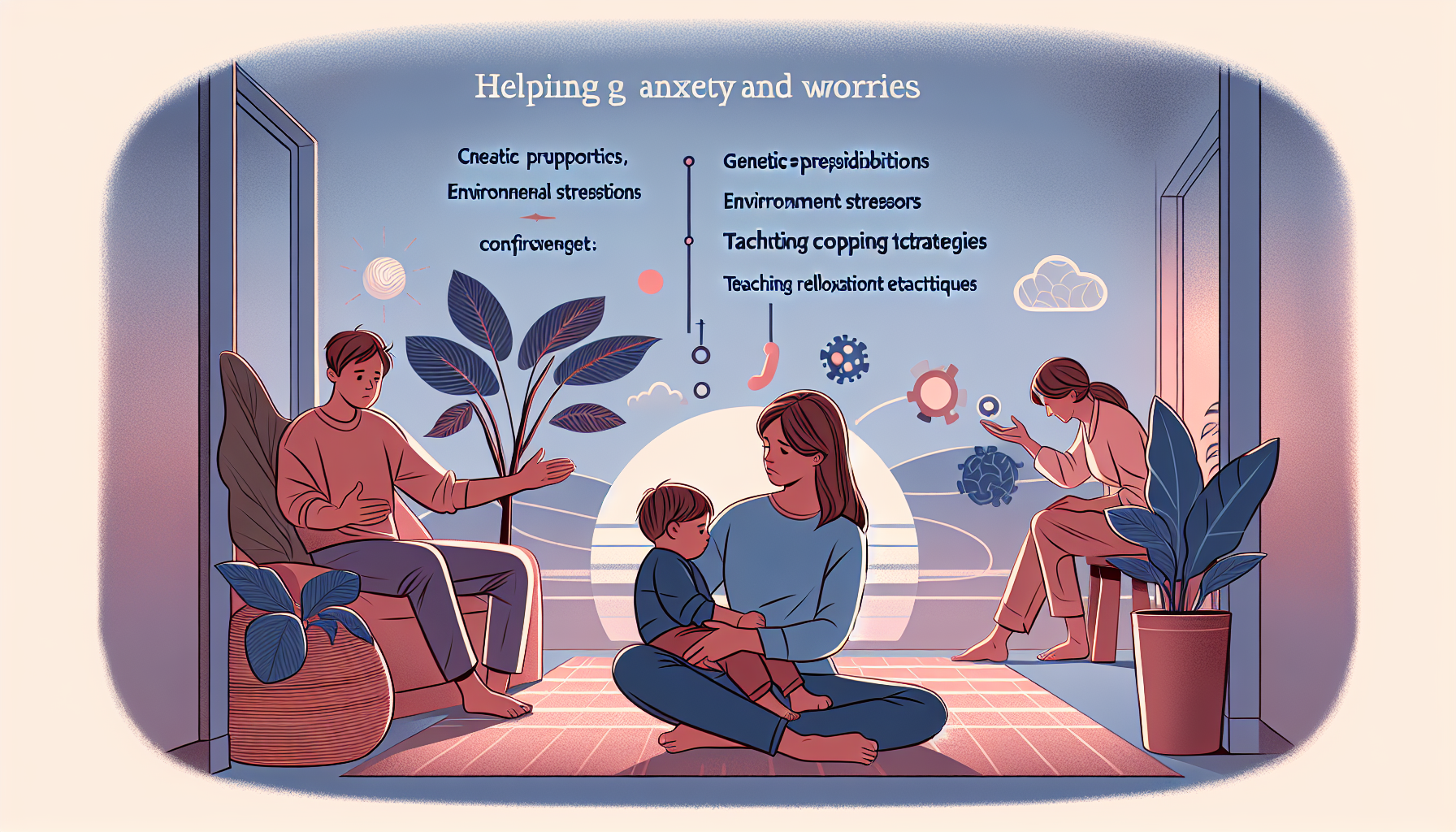“`html
Helping Kids Manage Anxiety and Worries
Introduction
Raising children is one of life’s most rewarding experiences, but it can also be challenging, especially when your child struggles with anxiety and worries. Anxiety is a natural emotion, but for some kids, it can become overwhelming and interfere with their daily lives. As parents, understanding how to provide anxiety relief for kids and offer emotional support is crucial to helping them develop resilience and thrive.
This article explores the causes of anxiety in children, offers practical strategies rooted in science, and provides parents with tools to support their kids effectively. By fostering open communication and creating a safe environment, you can help your child navigate their worries and build essential coping skills.
Understanding Anxiety in Kids
Anxiety in children can manifest in various ways, from excessive worrying to physical symptoms like headaches or stomachaches. It’s important for parents to recognize that anxiety is not just “shyness” or “acting out.” It’s often rooted in a combination of biological, psychological, and environmental factors.
Common Causes of Anxiety in Kids
- Genetics: A family history of anxiety disorders can increase the likelihood of anxiety in children.
- Environmental Stressors: Changes in routine, academic pressure, or family issues can trigger anxiety.
- Developmental Phases: It’s normal for kids to experience fears at certain developmental stages, such as separation anxiety in toddlers.
Understanding these underlying causes can help parents approach their child’s anxiety with empathy and patience.
How Anxiety Affects Kids
Anxiety can affect children both emotionally and physically. They might feel excessive fear, worry about unlikely scenarios, or struggle with self-doubt. Physically, anxiety can manifest as fatigue, difficulty sleeping, or even digestive issues. Without appropriate intervention, chronic anxiety can impact a child’s confidence, academic performance, and relationships.
For example, a child experiencing test anxiety might feel paralyzed by fear and avoid studying altogether. This creates a cycle of poor performance and increased stress. Breaking this cycle requires a combination of emotional support and practical stress management tools.
Practical Recommendations for Parents
Helping your child manage anxiety doesn’t require a degree in psychology. With consistent effort and the right strategies, you can provide the support they need. Here are some actionable tips to get started:
1. Create a Safe and Predictable Environment
- Establish routines to give your child a sense of stability and predictability.
- Ensure your home is a safe space where they can express their feelings without fear of judgment.
2. Encourage Open Communication
Let your child know it’s okay to talk about their worries. Use open-ended questions like, “What’s on your mind today?” to invite them to share. If they struggle to articulate their feelings, help them label their emotions. For example, you might say, “It sounds like you’re feeling nervous about your school project. Is that right?”
3. Teach Relaxation Techniques
Breathing exercises and mindfulness activities can help kids calm their minds and bodies. An easy exercise to try is the “4-7-8” breathing technique:
- Inhale for 4 seconds.
- Hold the breath for 7 seconds.
- Exhale slowly for 8 seconds.
Practice this together to make it a fun bonding activity while teaching them how to manage stress.
4. Build Resilience Through Problem-Solving
Instead of solving problems for your child, guide them through the process of finding solutions. For example, if they’re worried about a school presentation, brainstorm potential strategies together, like practicing in front of family or using cue cards.
5. Limit Exposure to Stressors
Monitor your child’s exposure to stressful content, such as scary movies or news reports. Encourage activities that promote relaxation and creativity, like drawing, reading, or playing outdoors.
6. Seek Professional Support When Needed
If your child’s anxiety persists or worsens, don’t hesitate to seek help from a mental health professional. Therapies like Cognitive Behavioral Therapy (CBT) have been proven effective in helping kids manage anxiety.
Conclusion
Helping kids manage anxiety and worries is one of the most important roles a parent can play. By creating a supportive environment, fostering open communication, and teaching practical coping skills, you can empower your child to face their fears and build resilience. Remember, you don’t have to do it alone—reach out to professionals when needed and explore additional resources like the ones available on the Child Mind Institute website.
With patience, empathy, and the right tools, you can make a lasting difference in your child’s emotional well-being, setting them up for a lifetime of confidence and success.
“`

